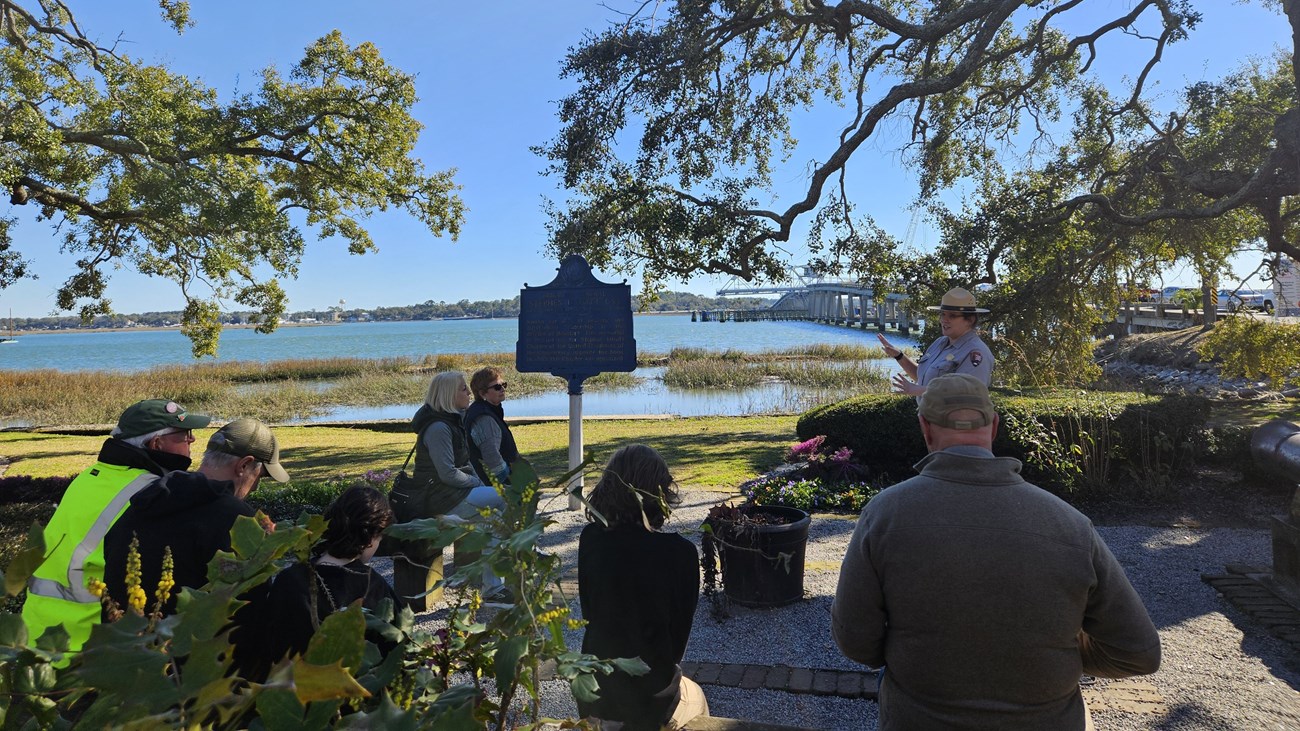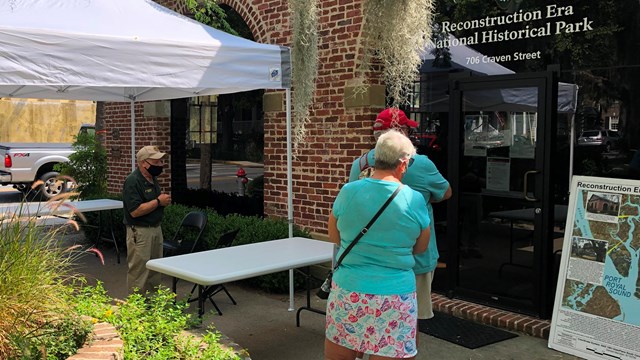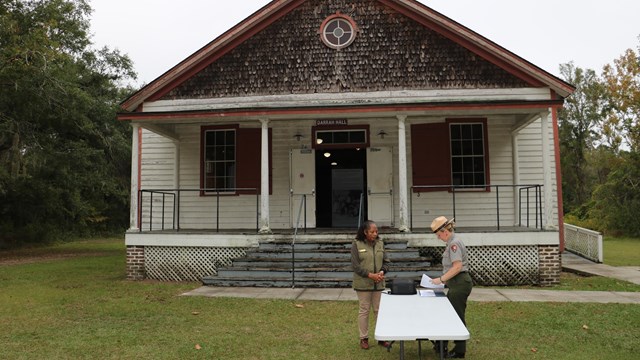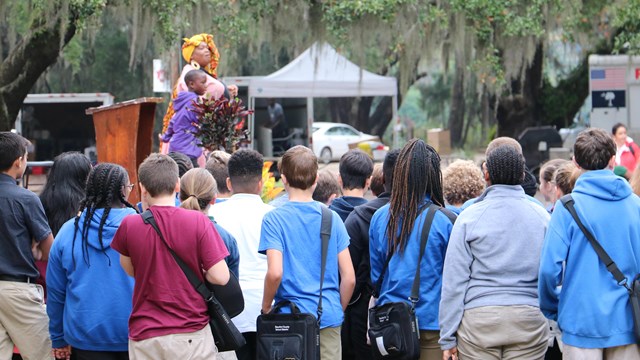
NPS/Jess Behrman Safety should always be a priority when visiting National Parks, whether you go to a large nature park or a historical park like Reconstruction Era National Historical Park. There are many considerations to take into account when visiting a park in a historic city. Review our rangers’ top tips for safety on this page to help plan your visit. Top Tips for SafetyThere are three locations of the park, each with different settings: a historic city, a nature area, and a small church. Each of these settings comes with different terrain, so it is important to always wear good walking shoes when visiting the park and watch your step. Black and red ants are present at all of our sites, particularly in the spring and summer. If you are allergic or concerned about being bite, consider wearing closed toed shoes. Due to the settings of the park, it is possible you will be crossing busy streets, walking close to tree limbs, seeing wildlife, or navigating uneven paths. It is important to stay aware of these hazards to prevent an accident. When crossing busy streets use cross walks and pedestrian lights whenever possible.
Two weather concerns to watch for while visiting the park are high temperatures in the summer and storms. Check the weather before your visit so you can come prepared. High temperatures can cause heat stroke and heat exhaustion, so drink water, know where you can get cool, and know your limits. Storms often bring high winds and can cause large puddles in the downtown area due to poor drainage; they can also approach quickly. Stay safe from the intense UV rays of the sun by wearing proper sun protection and sunscreen. Bug spray is a good idea when going out on the Capers Creek Trail at Darrah Hall or walking around after its rained. Bring your refillable water bottle with you when you visit the park. We have drinking water available at all locations and water bottle refill stations. Tours can last for up to an hour and are often not in shaded areas. Don’t leave valuables in your car whenever possible. If you must leave your valuables in your car, make sure to put them where they aren’t visible and lock your car. An important part of our park are the historical buildings, so please make sure to respect them so future generations can learn from them as well. Respecting historic buildings includes using proper entrances, not hanging on guard rails, not climbing on fences and walls, and being aware of fire hazards. Remember only service animals are allowed in the buildings. While there is no water in our park, we are surrounded by water. If you plan to take any of our trails, or hikes that go near the water, or go out on the water while visiting Beaufort, please check the tide charts and understand the water dangers. This is particularly important for anyone traveling with children at Fort Frederick near Pinckney-Porters Chapel, and along the Capers Creek Trail near Darrah Hall. The marsh is full of Pluff mud which looks solid but is not and you can get stuck. If there is an emergency, please call 911. Our park has cell service and the local emergency services will help keep you safe. 
Current Conditions
Find out what is open and how to visit. 
Plan Your Visit
Learn about how to make the most of your visit to Reconstruction Era National Historical Park 
Frequently Asked Questions
Find out the answers to some of the most frequently asked questions at the park. |
Last updated: February 21, 2024
